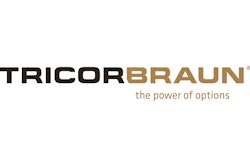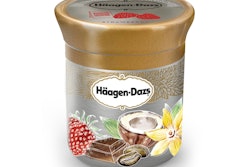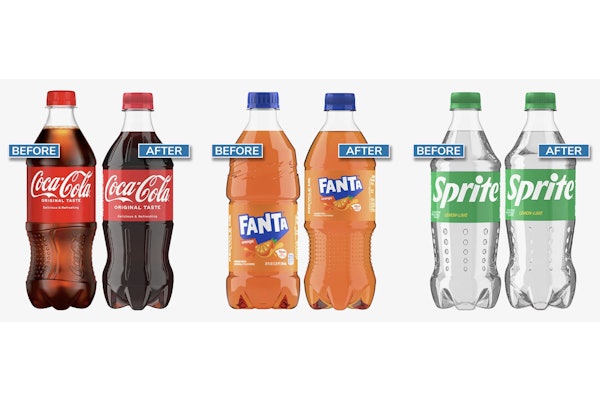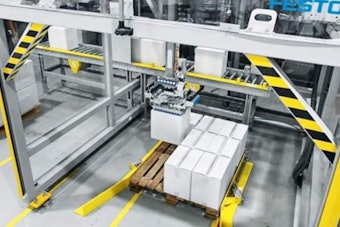Ever since consumers began ordering household staples and groceries online, CPGs have questioned whether selling products through this channel will require a change in their retail package design. How will graphics designed to stand out on shelf translate to the digital world? If a package is made more functional for shipping, can it still convey the brand experience? Will all the work done to establish brand shapes, labels, etc., be diluted? Is it worth the cost to stock different SKUs for different channels?
So far, the changes have come primarily in the form of structural improvements to existing packages to provide greater product protection, eliminate product leakage, reduce the amount of dunnage needed to secure the product, or solve other shipping-related issues. One such example comes from The Honest Co., well-known for its baby, personal care, cleaning, vitamin, and other products made from safe ingredients. It all began with a new laundry product, explains Tien Nguyen, Senior Industrial Designer for Berlin Packaging’s Studio One Eleven—the firm involved with the project.
“Liking the basic structure of an existing Califia Farms’ almond milk bottle, The Honest Co. wanted to create a packaging solution for their new baby fabric softener,” Nguyen says. “When leaking challenges arose with their existing 70-ounce detergent bottle, the project focus shifted to a redesign of the entire household laundry line for the burgeoning e-commerce environment.”
Studio One Eleven quickly recognized that the dosing-cap closure would play a critical role in reducing product leakage. The firm’s solution was to design a new polypropylene closure with a thick, high-density polyethylene foam liner that minimizes the assembly gap. Says Nguyen, “It is the thickness that distinguishes it from typical cap liners.”
The closure sits level with the bottle, marrying the two components. The cap is easily removable while maintaining an air-tight seal. To stop the “glugging” that occurred with the old spout, the new design has a longer cut-out spout that increases airflow and provides controlled pouring.
As for the bottle, the new design has a softer, rounder shoulder that improves top load, while its heavier weight improves drop resistance and creates a premium feel. An ergonomic handle allows for easy, one-handed gripping and pouring.The bottle is used for all of The Honest Co.’s laundry detergent and softener products, in 35-, 70-, and 100-oz sizes.
Another example of a package redesigned to withstand the rigors of e-commerce is a salsa jar from Houston-based contract packager Consolidated Mills, which produces its own line of products under the Alamo Red Foods brand. A redesign of its glass salsa jar to Amcor’s Apex™ PET jar with metal lug closure was undertaken when owners/brothers Keith and Scott Vrana decided they wanted more control over the distribution process than was afforded by the retail model.
“Our ultimate goal was to control our brand, including how we supply the product to our consumers,” says Keith. So Consolidated added a “shop” feature to their Alamo Red Foods website to allow consumers to purchase their three varieties of salsa online.
Consolidated Mills’ existing salsa package was a standard glass jar. To provide a better e-commerce solution, the company needed a more durable and lighter-weight alternative. Says Keith, “After seeing a sample of the new Apex jar, I knew this would be a game changer for the e-commerce industry.”
To facilitate the commercialization of the Apex jar, Consolidated Mills enlisted TricorBraun Design & Engineering Group, which worked with Consolidated Mills and Amcor to trial the new package. One of the goals of the trial was to determine if the jar could be capped with the redesigned lug closure, supplied by Crown and Massilly North America Inc., with minimal changes to the line. Says Keith, “We couldn’t have done this if a large financial investment was needed to change the setup and the equipment.” Luckily, the only modification required for the Massilly-supplied steam-injected capper was an adjustment in the height.
Another goal was to learn how Consolidated Mills’ existing package label would work with the new PET jar. “Because we do not have a cooling tunnel, we allow the jars to naturally cool in the shipper box after being filled and labeled, so our main concern was how the labels would react to the PET material,” says Keith. “We did see some problems initially, but our label supplier [Alliance Graphics & Printing] recommended a new material that corrected the issue.” The new label material, PrimeScan® from Spinnaker Coating, is a clay-coated polyolefin that is waterproof, tear- and grease-resistant, and resists temperature fluctuations.
Says Keith, the advantages of the new PET jar versus glass are numerous: “Using the PET jars greatly reduces the decibel levels during production, and we don’t have to worry about broken glass shutting down the line. Our cases weigh three pounds less now, reducing our freight cost, and because we are now shipping plastic containers, we are able to eliminate the extra packaging costs needed for e-commerce.” When shipping glass, Consolidated had to wrap the jars in bubble wrap before placing them in the case.
“Our goal is to get all of our salsas plus our other Alamo Red products, including Bloody Mary mixes and barbeque sauces, into hot-fill PET jars,” says Keith. “We will also encourage our private-label customers to switch to PET as well.”
























